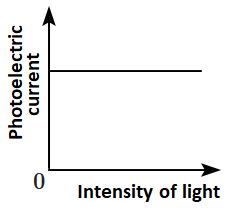Select Chapter Topics:
1. \(1.67~ \text{nm}\)
2. \(2.67~ \text{nm}\)
3. \(0.067~ \text{nm}\)
4. \(0.67~ \text{nm}\)
Prefer Books for Question Practice? Get NEETprep's Unique MCQ Books with Online Audio/Video/Text Solutions via Telegram Bot
NEET MCQ Books for XIth & XIIth Physics, Chemistry & Biology| \(\mathrm{(A)}\) |  |
\(\mathrm{(B)}\) |  |
| \(\mathrm{(C)}\) |  |
\(\mathrm{(D)}\) |  |
1. \(\mathrm{(A)}\) and \(\mathrm{(D)}\)
2. \(\mathrm{(B)}\) and \(\mathrm{(D)}\)
3. \(\mathrm{(A)}\) only
4. \(\mathrm{(A)}\) and \(\mathrm{(C)}\)
Prefer Books for Question Practice? Get NEETprep's Unique MCQ Books with Online Audio/Video/Text Solutions via Telegram Bot
NEET MCQ Books for XIth & XIIth Physics, Chemistry & Biology| 1. | \(c\sqrt{\dfrac{2m}{E}}\) | 2. | \(\dfrac{1}{c}\sqrt{\dfrac{E}{2m}}\) |
| 3. | \(\sqrt{\dfrac{E}{2m}}\) | 4. | \(c\sqrt{2mE}\) |
Prefer Books for Question Practice? Get NEETprep's Unique MCQ Books with Online Audio/Video/Text Solutions via Telegram Bot
NEET MCQ Books for XIth & XIIth Physics, Chemistry & BiologyIf \(c\) is the velocity of light in free space, the correct statements about photons among the following are:
| (A) | The energy of a photon is \(E=h\nu.\) |
| (B) | The velocity of a photon is \(c.\) |
| (C) | The momentum of a photon, \(p={\dfrac{h\nu}{c}}.\) |
| (D) | In a photon-electron collision, both total energy and total momentum are conserved. |
| (E) | Photon possesses a positive electric charge. |
| 1. | (A), (B), (C) and (D) only |
| 2. | (A), (C) and (D) only |
| 3. | (A), (B), (D) and (E) only |
| 4. | (A) and (B) only |
Prefer Books for Question Practice? Get NEETprep's Unique MCQ Books with Online Audio/Video/Text Solutions via Telegram Bot
NEET MCQ Books for XIth & XIIth Physics, Chemistry & Biology| 1. |  |
2. |  |
| 3. |  |
4. |  |
Prefer Books for Question Practice? Get NEETprep's Unique MCQ Books with Online Audio/Video/Text Solutions via Telegram Bot
NEET MCQ Books for XIth & XIIth Physics, Chemistry & Biology(take \(h=6.62\times10^{-34}~\text{J s}\) and \(c=3\times10^{8}~\text{ms}^{-1}\))
| 1. | \(4.4~\text{eV}\) | 2. | \(7.103\times10^{-15}~\text{J}\) |
| 3. | \(1.9~\text{eV}\) | 4. | \(4.60~\text{eV}\) |
Prefer Books for Question Practice? Get NEETprep's Unique MCQ Books with Online Audio/Video/Text Solutions via Telegram Bot
NEET MCQ Books for XIth & XIIth Physics, Chemistry & Biology| Statement I: | The de Broglie wavelength associated with a material particle depends on its charge and nature. |
| Statement II: | The wave nature of particles in sub-atomic domain is significant and measurable. |
| 1. | Both Statement I and Statement II are correct. |
| 2. | Both Statement I and Statement II are incorrect. |
| 3. | Statement I is correct but Statement II is incorrect. |
| 4. | Statement I is incorrect but Statement II is correct. |
Prefer Books for Question Practice? Get NEETprep's Unique MCQ Books with Online Audio/Video/Text Solutions via Telegram Bot
NEET MCQ Books for XIth & XIIth Physics, Chemistry & Biology| 1. | \(\lambda_{\mathrm{e}}>\lambda_{\alpha}\) | 2. | \(\lambda_{\mathrm{e}}=4\lambda_{\alpha}\) |
| 3. | \(\lambda_{\mathrm{e}}=\lambda_{\alpha}\) | 4. | \(\lambda_{\mathrm{e}}<\lambda_{\alpha}\) |
Prefer Books for Question Practice? Get NEETprep's Unique MCQ Books with Online Audio/Video/Text Solutions via Telegram Bot
NEET MCQ Books for XIth & XIIth Physics, Chemistry & Biology(take \(h\) as Plank's constant and \(c\) as the velocity of light in free space)
| 1. | \({e}+2\phi \) | 2. | \(2{e}-\phi \) |
| 3. | \({e}-\phi \) | 4. | \({e}+\phi \) |
Prefer Books for Question Practice? Get NEETprep's Unique MCQ Books with Online Audio/Video/Text Solutions via Telegram Bot
NEET MCQ Books for XIth & XIIth Physics, Chemistry & Biology| 1. | \(\mathrm{Na}\) only | 2. | \(\mathrm{Cs}\) only |
| 3. | both \(\mathrm{Na}\) and \(\mathrm{K}\) | 4. | \(\mathrm{K}\) only |
Prefer Books for Question Practice? Get NEETprep's Unique MCQ Books with Online Audio/Video/Text Solutions via Telegram Bot
NEET MCQ Books for XIth & XIIth Physics, Chemistry & Biology